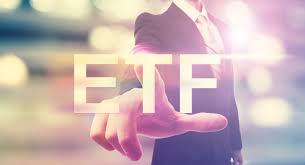IT IS YOUR MONEY
Tokenized Funds: ETFs on the Blockchain
Tokenized funds are bringing ETFs and mutual funds onto the blockchain, enabling 24/7 trading, instant settlement, and fractional ownership. Asset managers like BlackRock and Fidelity are launching digital versions of traditional funds. This shift reduces costs, increases accessibility, and bridges traditional finance with decentralized markets. The future of fund investing is on-chain.

From Paper to Digital: The Evolution of Investment Funds
Traditional investment funds—ETFs, mutual funds, hedge funds—are built on legacy infrastructure with slow settlement (T+2), high custody fees, and limited trading hours. Tokenization transforms these structures by issuing fund shares as digital securities on blockchain networks.
Each token represents a share in the underlying portfolio, whether it’s an S&P 500 index fund or a private equity vehicle. Ownership is recorded immutably, and transactions settle in minutes rather than days.
This model reduces reliance on intermediaries like transfer agents and clearinghouses, lowering operational costs and increasing efficiency.
Real-World Launches by Major Institutions
In 2024, BlackRock launched the BUIDL Fund, a tokenized treasury fund on the Ethereum blockchain. Backed by real U.S. Treasuries, it offers institutional investors yield with daily liquidity and near-instant settlement. Within months, assets under management exceeded $500 million.
Fidelity followed with a tokenized version of its Ethereum-based ETF, enabling seamless movement between DeFi and TradFi ecosystems. State Street and Goldman Sachs are also developing blockchain-based fund platforms to serve institutional clients.
These initiatives signal a major shift: Wall Street is embracing digital assets not as speculative instruments, but as core infrastructure for modern finance.
Advantages: Liquidity, Accessibility, and Programmability
Tokenized funds offer round-the-clock trading, unlike traditional markets limited to business hours. This is especially valuable for global investors in different time zones.
Fractional ownership allows investors to buy as little as 0.01% of a fund share, lowering entry barriers. Smart contracts automate dividend distributions, rebalancing, and compliance—such as investor accreditation and tax reporting.
Additionally, interoperability with DeFi opens new use cases. A tokenized ETF share could be used as collateral in a lending protocol, unlocking capital without selling the asset.
Regulatory Frameworks and Market Readiness
Regulators are adapting. The U.S. SEC has approved several tokenized funds under Regulation D and Regulation S. The EU’s MiCA framework explicitly includes "tokenized securities," providing legal clarity.
Custody solutions like Fireblocks and Anchorage Digital ensure secure storage of digital fund shares. Interoperability standards such as ERC-3643 enable compliance-aware tokens to move across platforms.
Despite progress, challenges remain. Secondary market depth and investor education are still evolving. However, as infrastructure matures, tokenized funds are expected to become mainstream.
The convergence of traditional asset management and blockchain is not a disruption—it’s an evolution. It delivers the same trusted investment vehicles with faster, cheaper, and more flexible execution.
To explore how tokenized funds can enhance your investment strategy and portfolio efficiency, visit DigitalAssets.Foundation and consult with specialists for a FREE consultation.

More News
© 2025
